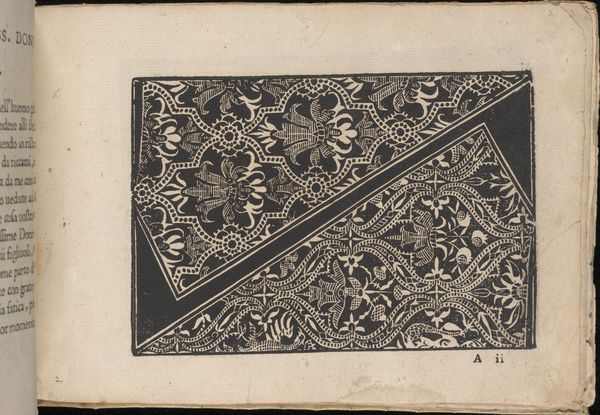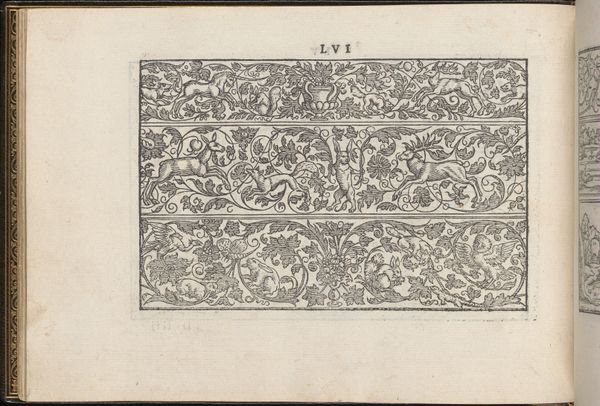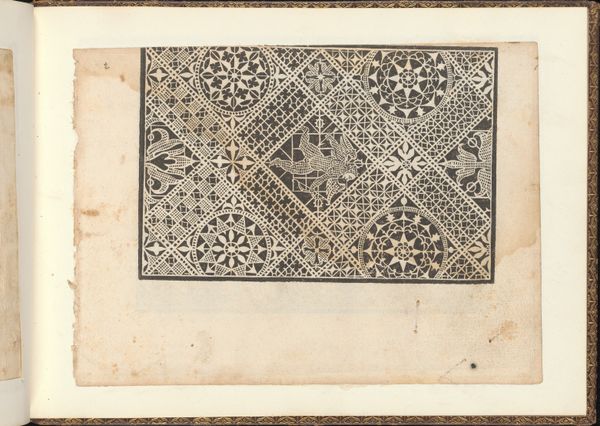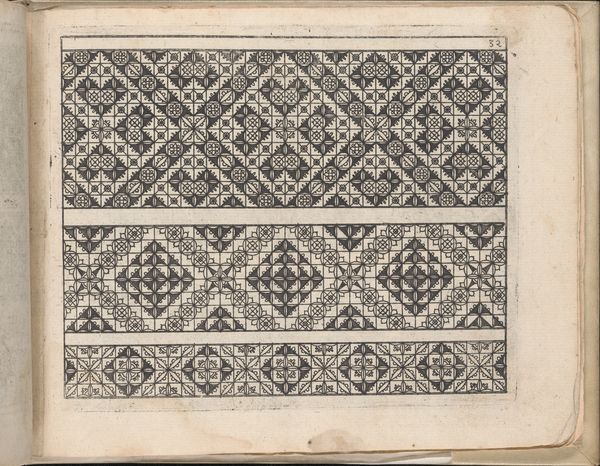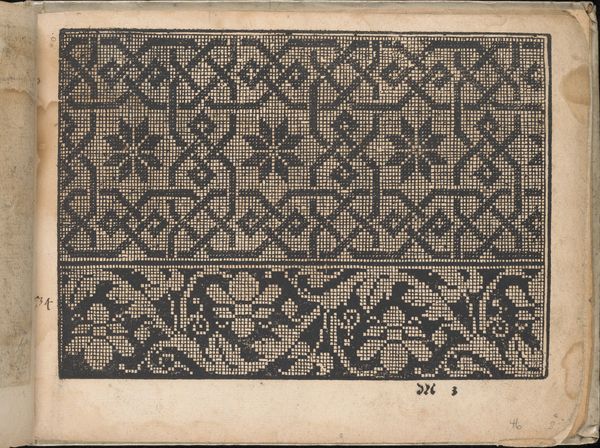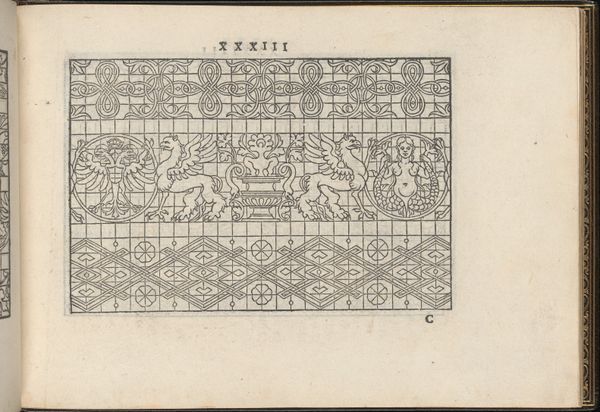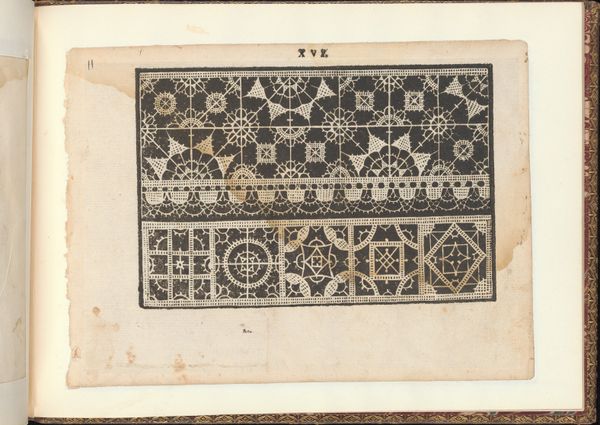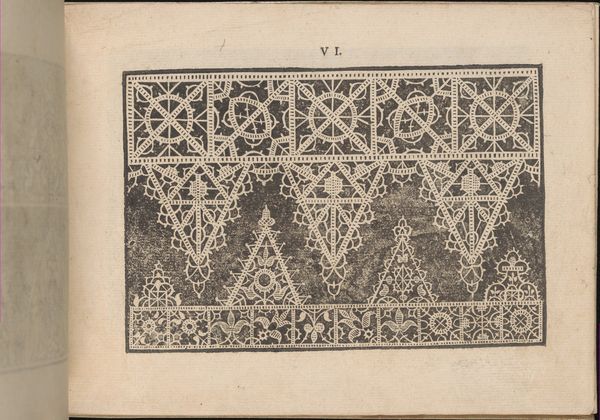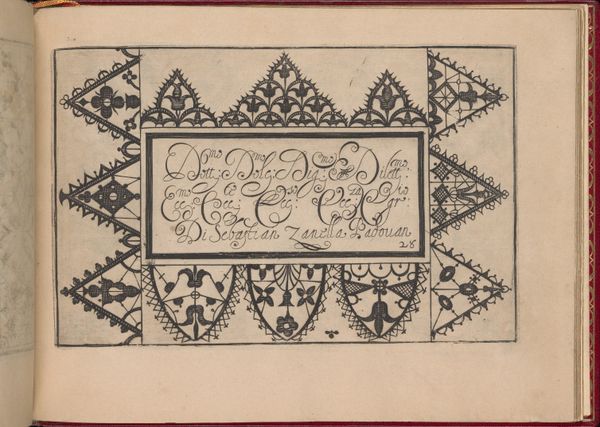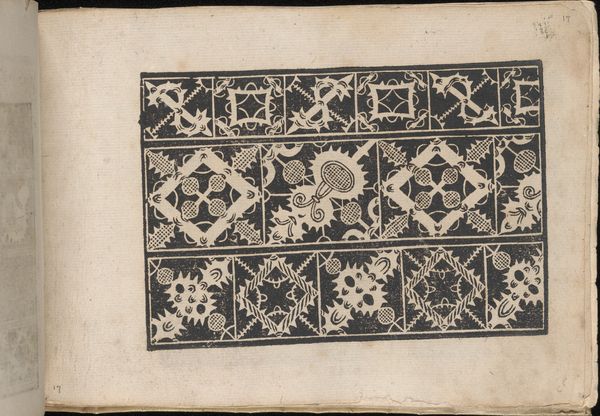
drawing, print, paper, ink
#
drawing
#
ink paper printed
# print
#
book
#
flower
#
paper
#
11_renaissance
#
ink
Dimensions: Overall: 6 11/16 x 9 1/16 in. (17 x 23 cm)
Copyright: Public Domain
Curator: Look at this page, designated "Prima Parte de' Fiori, page 4", from 1591. It's held at The Metropolitan Museum of Art, realized through the combined efforts of ink and print on paper. What catches your eye? Editor: Oh, goodness, it's an intense little world! Dense and ornate, feels like getting lost in a tiny, beautifully cultivated maze. It's mesmerizing. Curator: Absolutely. These botanical prints like those found in Ciotti’s "Fiori" were instrumental in spreading visual knowledge of plants throughout Europe, especially to people that didn’t have access to these wonders. Pattern books served as more than simple inspiration, providing direct sources that defined artistic creations. It democratized artistic resources and reshaped cultural patterns during this historical period. Editor: Yes, it's so carefully rendered, all those delicate little flowers and vines... It's kind of dizzying, though, isn’t it? There is something slightly overwhelming about the sheer volume of detail that wants my attention at the same time. The sharp dividing line and the different shades help me to deal with all that detail a little bit easier. What do you think about that division? Curator: The contrasting densities are rather clever, don't you think? Offering an organized complexity for dissemination among craftsmen and artists. The visual presentation could be perceived as chaotic due to an untrained eye; however, artisans of that period needed a common structure that aided reproducibility. This kind of division enhanced clarity within pattern books. Editor: So, it was, in some ways, a functional choice. It does prompt the question; What impact this kind of resource would have in workshops. It must have changed workflows and promoted specific styles throughout artistic workshops. Curator: Precisely. Printed books brought pattern diversity beyond a single locality; now art expanded towards multiple local interpretations. A single artisan with printed guides now was capable of transmitting multiple techniques by himself through multiple works. Editor: Incredible to think about the artistic ripples that such a small drawing would produce through that time. Thanks for opening my eyes a bit more!
Comments
No comments
Be the first to comment and join the conversation on the ultimate creative platform.
